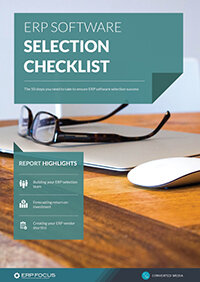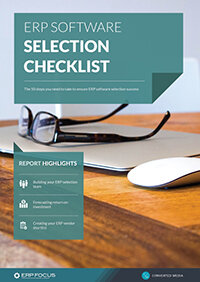3 signs you need a new oil and gas ERP
Oil and gas makes up a complex, global group of industries. We could look at exploration, extraction, transportation, refining, distribution, and reclamation and come up with a discussion on each sector, but we will focus on refining today and the role ERP can play in process improvement.
Inventory valuation
If you have trouble calculating the value of the inventory currently in process in your refinery with confidence for your financial statements, you might need a new ERP.
Refining petroleum products is a series of individual steps. Crude oil is distilled using atmospheric, vacuum, or other processes. Heavier outputs, such as tar, and lighter outputs, such as petroleum gas as well as gasoline and kerosene in between, all move along for further processing. At each step, the hydrocarbon volume changes with temperature and pressure.
Costs consist of purchased crude plus the operational cost of distillation. ERP should track these costs and divide by the selected output volume to yield inventory valuation. Some of the output may be sold as is. Oil and gas ERP systems must have the ability to accurately measure cost of sales and costs deferred in further processing inventory.
2. Production scheduling
If your inventory at each process unit is not efficiently used to yield the output required by your customers, you might need a new ERP.
Recommended reading: ERP selection survival guide - 10 steps to ERP selection success
Refineries need to schedule the flow of volume from one unit to the next along the process. When a certain volume is required, there must be the right amount of volume introduced at the beginning of the process. In addition to scheduling time to yield the product required by a customer, oil and gas ERP should schedule the correct volumes through the upstream processes to allow the required output.
3. Compliance
If you use volumes of spreadsheets and more pounds of paper than crude—along with best guesses—to prepare your compliance reports, you might need a new ERP.
Refineries almost everywhere have a reputation for being some of the world’s worst polluters. There is invariably a distinctive odor downwind from any refinery. The earth below accumulates hydrocarbon residue that can be hazardous itself and can also pollute water aquifers.
If we introduce a kilogram of crude, we should be able to see a kilogram of output at the other end of the process. If not, then we must account for the lost crude to comply with many regulatory doctrines. Did it burn off into the atmosphere? How much was captured by our scrubbers? What was the volume of cleaned-up matter that actually left the exhaust? These are the kinds of data sets that government and industry bodies will require for you to meet compliance requirements. Oil and gas ERP should provide that data in real-time, and the built-in business intelligence module should format the data to meet the requirements of regulations.
Free white paper

60-Step ERP Selection Checklist
Get the comprehensive checklist for your ERP selection project

Featured white papers
-

Top 10 Oil and Gas ERP Software Comparison
Get your free comparison of the top 10 oil and gas ERPs
Download
Related articles
-

Essential features to look for in an oil and gas ERP systems
What your oil and gas ERP should do for your company and key features to look for
-

CMMC Compliance: What Aerospace and Defense Manufacturers Need to Know
Key insights on CMMC compliance, deadlines, and securing DoD contracts with CMMC 2.0 certificatio...
-

Top requirements for an oil and gas ERP
These 5 capabilities should be at the top of your oil and gas ERP requirements

